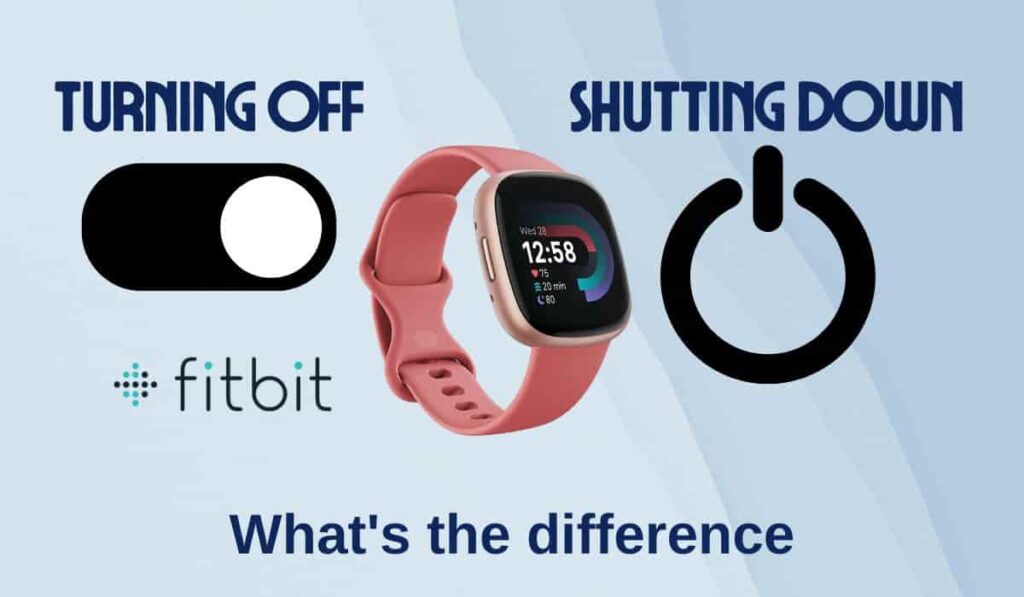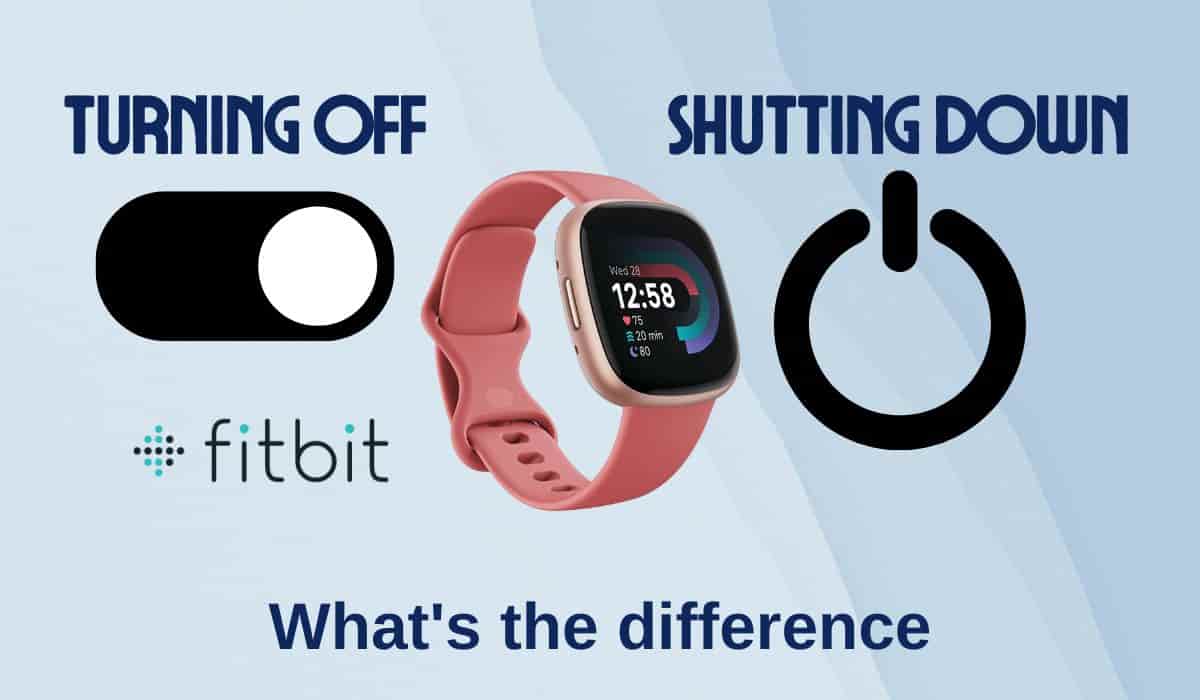Although some Fitbit trackers can go for several months without charging, the majority only last 7 to 10 days. But what if you want to fully turn off the tracker or smartwatch? Is Fitbit a device that can be turned off? Here we will show you the differences and usage of Turning Off or Shutting Down Your Fitbit.
Most Fitbit watches can be turned off using the settings app. The majority of Fitbit trackers can’t be turned off completely, though. Battery life can also be extended by disabling auto-wake and reducing screen brightness.
Let’s have a look at which Fitbit models may be turned off, how to disable auto-wake and use the screen dimming option, as well as other battery-saving techniques.

Can a Fitbit be turned off?
The majority of Fitbit smartwatches and some older Fitbit models can only be shut down. Many frequently used Fitbits, nevertheless, cannot be totally turned off.
All Fitbits can be restarted or rebooted, but only certain of them can be shut off completely. There are other approaches, though, to keeping your Fitbit’s battery alive without turning it off.
If your Fitbit has a shutdown option, you may go to Settings and choose Shut Down with ease. You may also turn on and off the Fitbit from some models’ power buttons.
Although the reason Fitbit hasn’t extended this capability to all devices is unknown, part of it may be due to the improved battery found in the majority of Fitbits.
Which FitBit smartwatches can be Switched on/off?
It is possible to turn off Fitbit Sense, and Fitbits from the Versa series, as well as the Blaze, Surge, and Iconic. Other well-liked Fitbit models, including the Inspire and Charge, cannot be completely turned off unless the battery is completely discharged.
However, you can restart any Fitbit model. The Shut Down option in the settings will be available on all Fitbit devices with an off/on switch.
The Shut Down option can be found under settings on select Fitbit models. In some, you’ll need to select Settings, then About, before selecting Shut Down.
If you’ve forgotten your charger or won’t be using the Fitbit for a time, this will entirely turn the tracker off and can be a dependable way to conserve battery life.
How Long Does Your Fitbit’s Battery Last When It’s Off?
Turning off your Fitbit can extend the life of the battery, albeit it’s not the best solution. The battery will ultimately run out if you leave the Fitbit for a long enough period of time, but it will still slowly deplete even while the Fitbit is turned off.
However, when your Fitbit is turned off, it will take weeks for the battery to totally discharge as opposed to just a few days if you leave the Fitbit on. Therefore, turning off the Fitbit if you won’t be using it for a few weeks might prolong battery life.
However, there are more effective techniques to prolong battery life if you want to use the Fitbit frequently. Fitbits can operate for several days on one charge, but you may extend battery life by reducing screen brightness and disabling auto-wake.
How to reduce screen brightness?
The Fitbit’s battery can be effectively preserved by dimming the display and disabling auto-wake. Both Fitbit trackers and smartwatches include dimmable screens.
To dim the display-
- Navigate to Settings.
- Choose Brightness or Dim Screen next.
Battery life will be preserved, however, there may be visibility concerns outside.
How to disable the auto-wake screen
Another efficient technique to extend Fitbit’s battery life is to disable the auto wake option. Additionally, it will stop the Fitbit from turning on each time you move your wrist.
To disable auto-wake:
- Navigate to Settings.
- Choosing Screen Wake.
- Make sure it is off or on manually, then.
Since Fitbit uses more power when the screen is on, this is the most efficient way to maintain the battery.
Other ways for Fitbit Battery Conservation
Other options are just as effective as disabling auto-wake and darkening the Fitbit’s screen in terms of extending battery life. Fewer alarms are set, all-day sync is disabled, and fewer statistic checks are made. When not needed, you can easily switch the heart rate monitor off.
Let’s take a closer look at a few of these solutions:
Reduce Alarms
Try to limit the amount of alarms you set on your Fitbit because they use more power than other features.
Disable All-Day Sync
If you want to utilise the Fitbit app to track your data in real-time, all-day sync is helpful. To conserve battery life, you can disable all-day sync if you don’t mind syncing the data only once per day or even once per week.
Less often, check your statistics
There are many methods for checking the data depending on the Fitbit model. However, having notifications and reminders will cause the battery to discharge more quickly. In the settings app, you can disable each of these functions.
Leave the heart rate monitor off.
You don’t have to wear the heart rate monitor all day, even though it can be useful when working out. When not in use, turn off the heart rate monitor to preserve the Fitbit’s battery for longer.
Also Read

